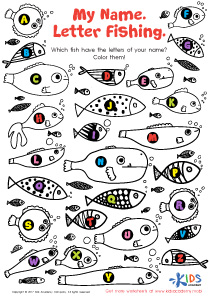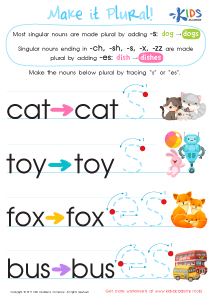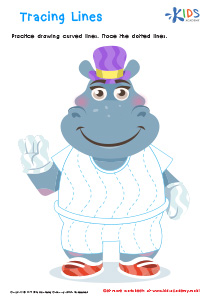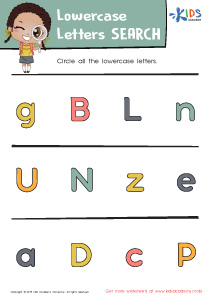Easy Upper & Lowercase Letters Worksheets for Ages 5-7
6 filtered results
-
From - To
Discover our collection of Easy Upper & Lowercase Letters Worksheets designed specifically for children ages 5-7. These engaging and colorful worksheets help young learners recognize, differentiate, and practice writing both uppercase and lowercase letters. Each worksheet is thoughtfully crafted to enhance fine motor skills while making learning fun and interactive. Perfect for homeschool, classroom activities, or after-school practice, our resources aim to boost confidence in early literacy. With a variety of exercises and playful themes, your child will enjoy the journey of mastering the alphabet. Start their learning adventure now with our printable worksheets available at Kids Academy!
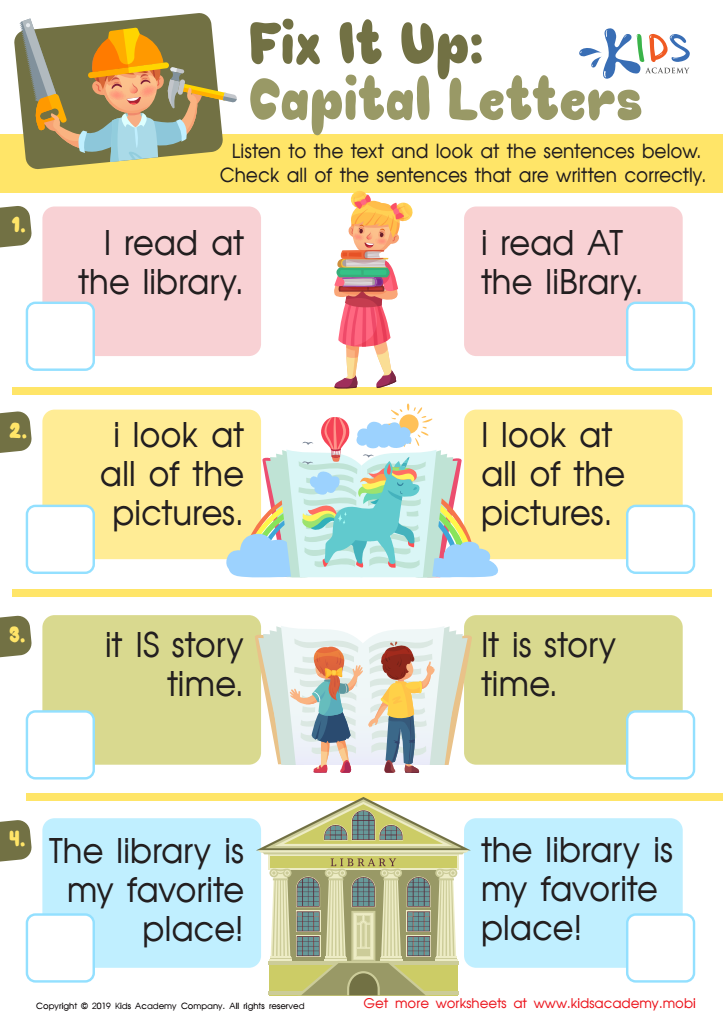

Fix Capital Letters Worksheet
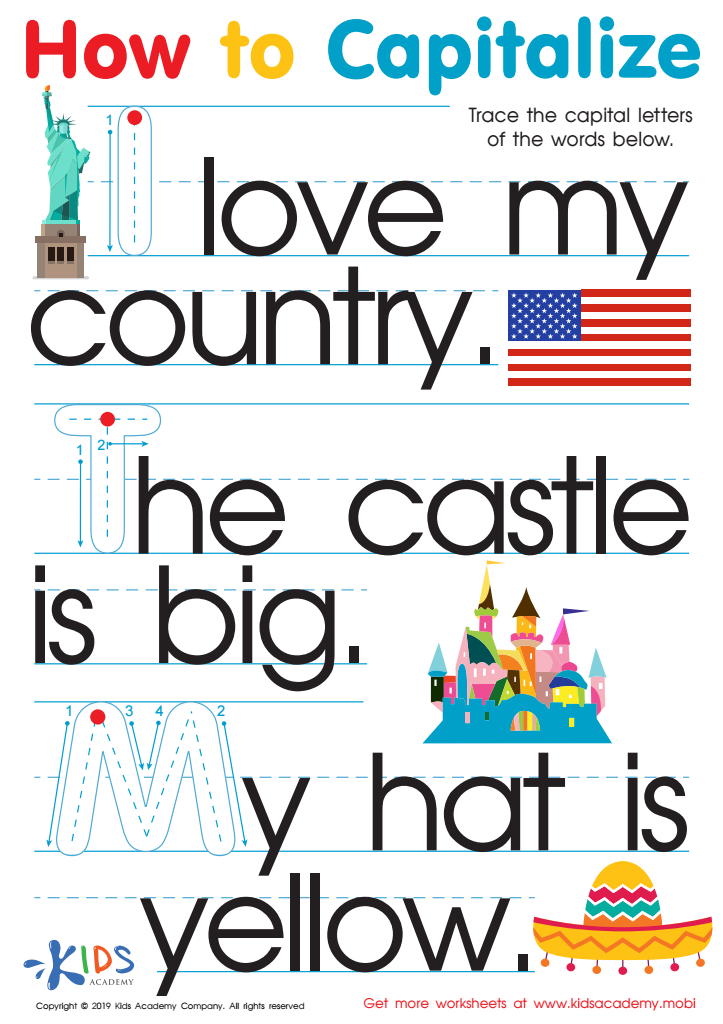

How to Capitalize Worksheet
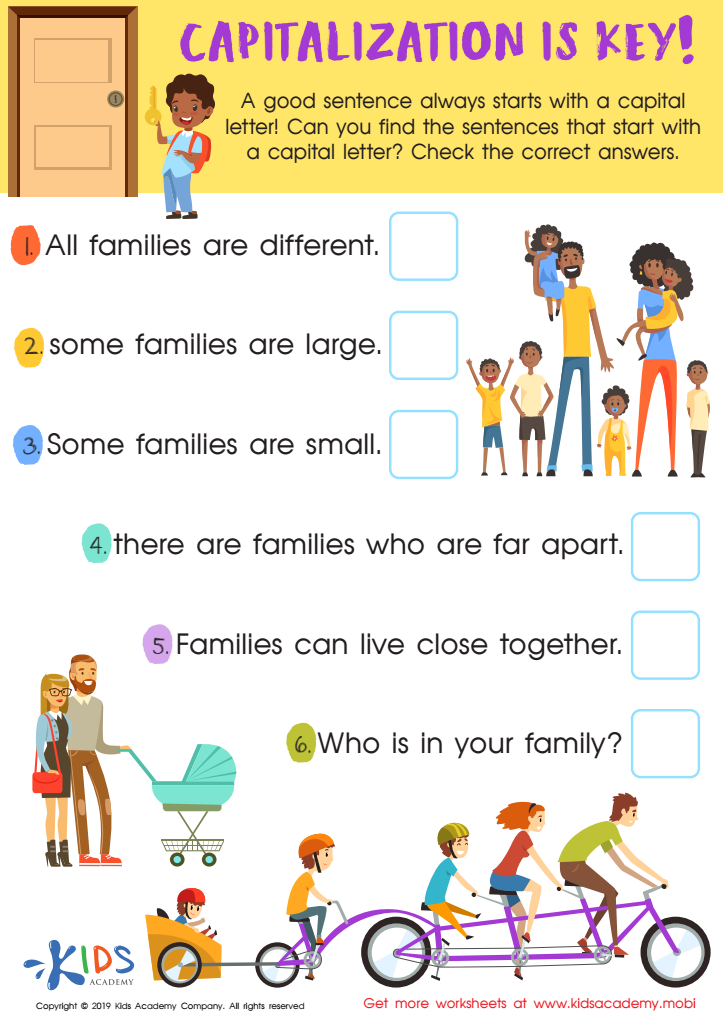

Capitalization Key Worksheet
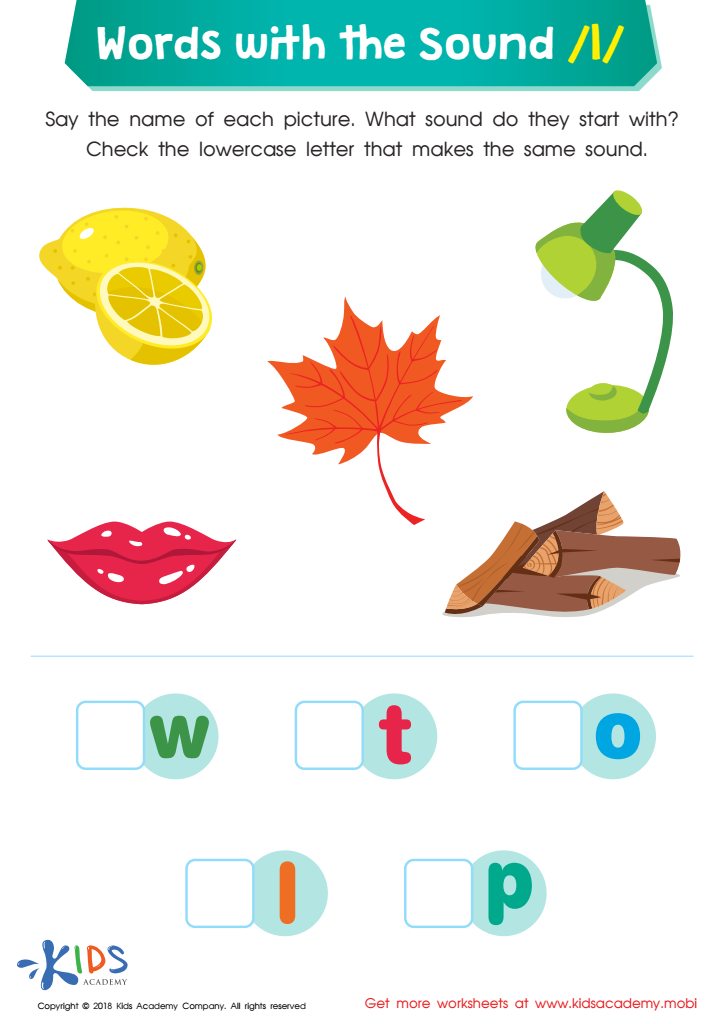

Words with Sound L Reading Worksheet
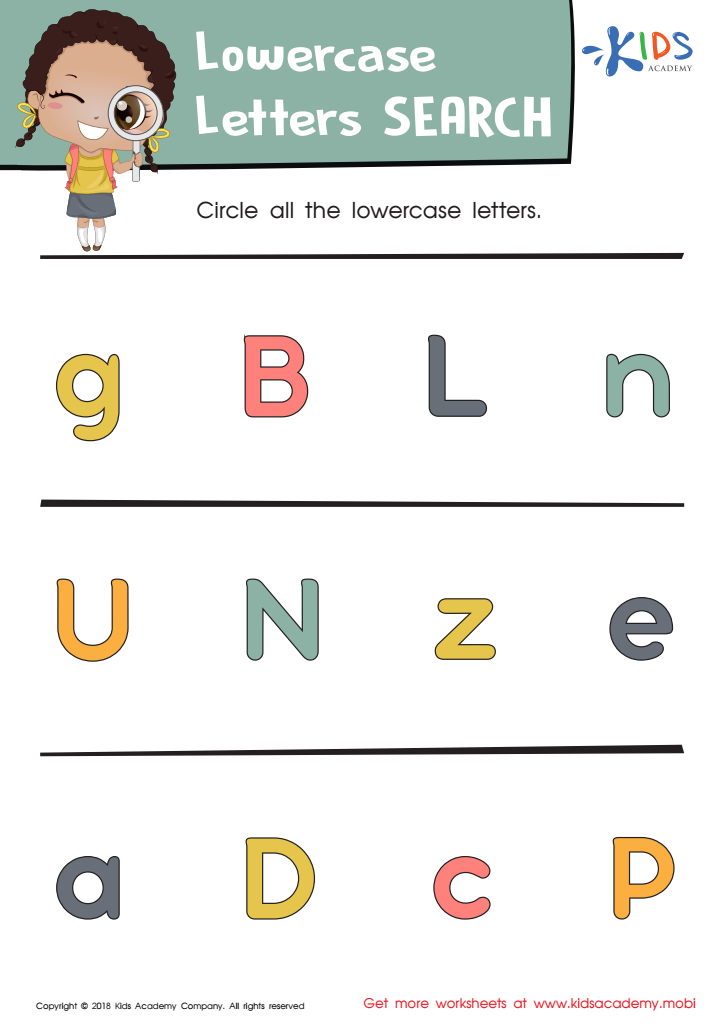

Lowercase Letters Search: Assessment Worksheet
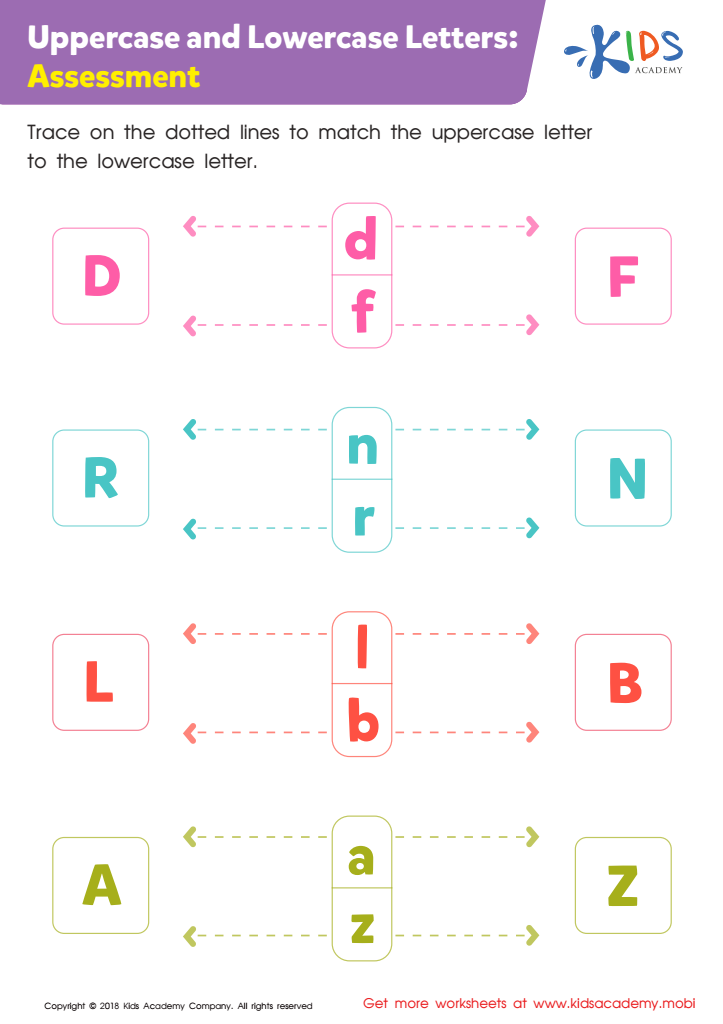

Uppercase and Lowercase Letters: Assessment Worksheet
Understanding easy upper and lowercase letters is fundamental for early literacy skills among children aged 5-7. Parents and teachers should care about this because mastering these letters sets the foundation for effective reading and writing. At this age, children are typically in the process of learning to read and write independently, and distinguishing between upper and lowercase letters is crucial for developing these skills.
Uppercase letters are often used at the beginning of sentences or for proper nouns, while lowercase letters are predominant in most written language. By familiarizing children with both sets of letters, educators enable them to decode texts and construct meaningful sentences. This knowledge promotes confidence and a love for reading.
Moreover, engaging children with fun and interactive strategies for learning these letters enhances their motivation and retention. Activities such as games, songs, and crafts can make the learning process enjoyable, ensuring that children remain curious and eager to learn.
Lastly, early intervention inletter recognition can prevent future challenges in literacy development. Promoting a robust understanding of upper and lowercase letters fosters essential skills that will benefit children throughout their educational journey. Investing time and resources into this aspect of learning is vital for nurturing competent, confident readers and writers.
 Assign to My Students
Assign to My Students






